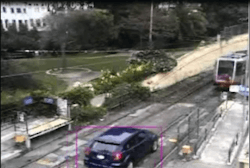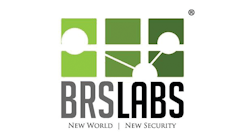When it comes to keeping transit systems safe, technology suppliers are asking those looking into upgrades approach their infrastructure with an emphasis on openness.
“We don’t see this as a marketing tool,” said Fredrik Wallberg, marketing director for Milestone Systems. “We see this as a way of life. We see this as a way of doing business.”
Wallberg and representatives took part in the IP Video Seminar Aug. 15 in Chicago, where companies displayed what their products can do and the importance of openness and building an open system in order to create a fully comprehensive security system for transit agencies and other entities.
Wallberg said creating a system where openness is emphasized allows for security officials to integrate different types of evidence caught on systems will allowing for lower costs in the long run.
Agencies often have multiple different types of technologies and operating on an open platform, security officials can manage the technology and make upgrades to some equipment without having to make expensive investments on upgrading the entire system.
It also allows for outside agencies to quickly access data if they’re helping in an investigation or need assistance in their own cases.
“The speed of innovation in this industry isn’t something you can catch up with,” Wallberg said. “So you need something that’s open to future generations.”
Jeff Poirier, sales engineers for Proximex, said physical security information management (PSIM) software is also an important part of an open system while upgrading security, as it allows for all operations and security personnel to quickly see all data coming in from an incident in a quick manner.
By putting all the same data together, it allows for less training and ensures easier use of best practices for an agency by making sure all steps are followed during an incident.
It also allows for security personnel to pull up any and all data that may be pertinent to handling a situation, such as GIS maps and it allows for agencies to track suspects in an incident by automatically following them during a pursuit.
“We’re not taking over the management of the systems,” he said. “We give you a single pane of glass with all your input on one operating console.”
One such instance of ever evolving technology is the ability for cameras to recognize what’s going on. John Convoy, senior vice president of strategic alliances for BRS Labs said camera technology has evolved from motion detectors and programming to recognize specific behaviors, to cameras that now spot, learn and highlight any out of the ordinary behavior. Convoy said by setting up rules-based equipment, it hinders agencies because it can only track so many objects at one time, it takes hours to set up a single camera, they detect a lot of false positives and they need considerable maintenance due to needs of always having to write new rules.
On one example, Convoy cited an instance where an employee with the Washington Metropolitan Transit Authority (Metro) was stealing parts from the agency and hiding them in abandoned buses. Because the employee knew cameras were only programmed to recognize certain behaviors, he would skirt off the video in order to avoid detection.
“It’s interoperability,” he said. “We’re not the solution. We’re part of the solution.”

Joe Petrie | Associate Editor
I came to Mass Transit in 2013 after spending seven years on the daily newsbeat in southeastern Wisconsin.
Based in Milwaukee, I worked as a daily newspaper reporter with the Waukesha Freeman from 2006-2011, where I covered education, county and state government. I went on to cover courts for Patch.com, where I was the main courts reporter in the Metro Milwaukee cluster of websites.
I’ve won multiple awards during the course of my career and have covered some of the biggest political events in the past decade and have appeared on national programs.
Having covered local government and social issues, I discovered the importance of transit and the impact it can have on communities when implemented, supported and funded.




